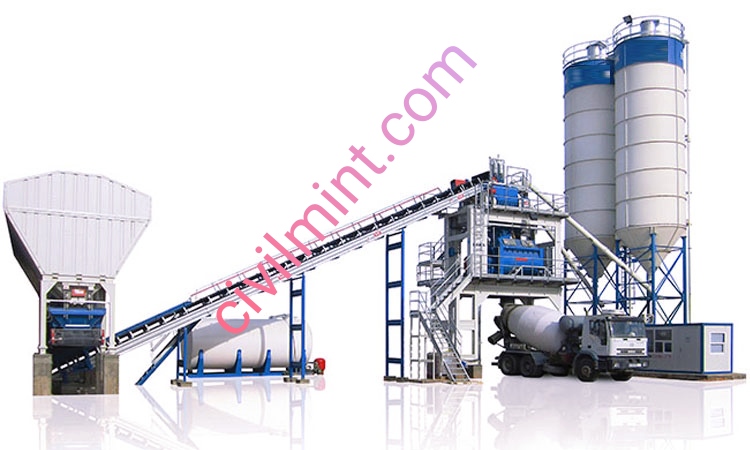A concrete batching plant is a type of plant that uses various ingredients to produce concrete. A wide variety of ingredients are used, including cement, sand, aggregates, water, admixtures, silica fume, fly ash and slag.
A typical concrete batching plant is showen below.

There are many types of mixing plant parts such as mixers, multi-batch aggregates, multi-batch cements, aggregate tanks, belt conveyors, cement tanks, heaters, radial stackers, coolers, dust collectors.
All aggregates are screw conveyors with collected trash and control system is used to control the whole process. After that, the concrete is completed through the kneading process.
Table of Contents
Various Types of Concrete Batching Plants
The most common types of concrete batching plants are as follows:
- Manual Weigh Batching Plant
- Semi-automatic Weigh Batching Plant
- Fully Automatic Weigh Batching Plant
Now we will know about these concrete batching plants in detail.
1. Manual Weigh Batching Plant
Manual weighing batching plants are the first type of batching plants used in the past. This type of plant is very time consuming and the proportions are not properly maintained.
All additives are manually mixed on a hand scale system. Small type constructions use a manual weight loading system.
2. Semi-automatic Weigh Batching Plant
A semi-automatic weigh batching plant is another type of batching plant where the aggregate bin gate is manually controlled. The mixing process is automatic and the gate closes automatically once the dispensing process is complete.
3. Fully Automatic Weigh Batching Plant
Fully automatic weighing batching plant is the latest type of batching plant that is frequently used these days. This is an automated system that requires the use of experienced and trained engineers.
Fully automatic weigh feeders have an automated microprocessor to control the feeder system. This system automatically measures the moisture content of the aggregate, and if there is a slight change in the moisture content, relative measurement can be performed to obtain the desired concrete strength.